Running With Sciatica: What You Need To Know
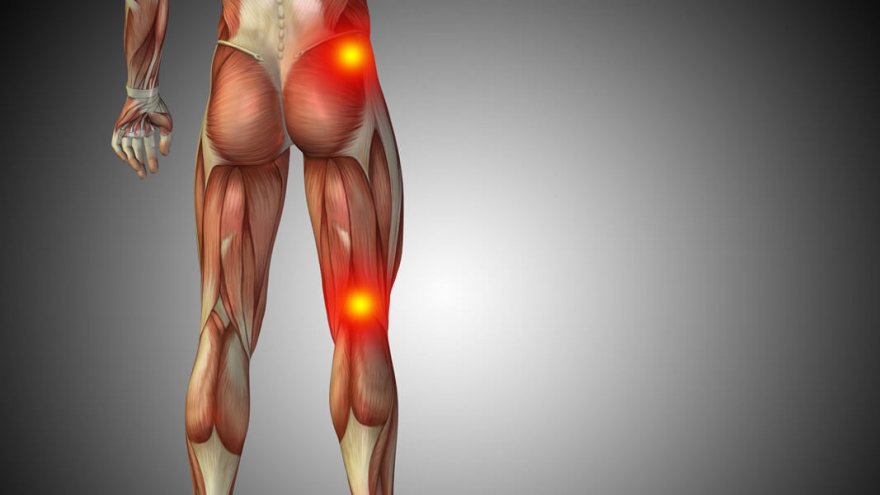
Sciatica is pain that radiates along the sciatic nerve. What is the sciatic nerve? Your sciatic nerve starts in your lower back, and it branches out through the lower back and hips. It extends through the buttocks and down the legs.
What Causes Sciatica Pain?
Typically sciatic nerve pain is caused by something pinching on the nerve. For example, you could have a bulging disc or slipped disc, or a bone spur pushing on it. This pressure causes the nerve to pinch, which results in pain.
While some people describe the pain as stabbing pain, others describe it as searing. For other people, it presents more like numbness or pins and needles.
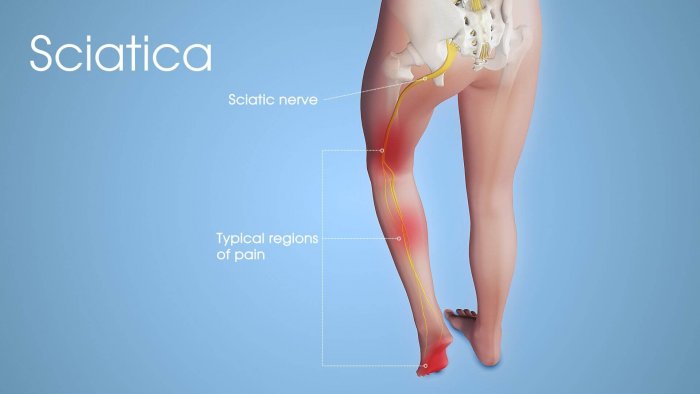
If you talk to a doctor about sciatic pain, he or she may tell you to simply let it rest. With enough rest, most people get sciatica relief within two to three weeks.
Will Running Make My Sciatica Worse?
There is not a black and white answer to this. Some can run through sciatica pain while others cannot. The general consensus is that running does not cause sciatica; however, running with sciatica can exacerbate the symptoms.
Some people find that making some modifications can help them to continue to run through the sciatic pain. Here are some tips.
How Can I Run With Sciatica Pain?
First off, if you plan to run with sciatica pain, consider warming your lower back up with a heating pad. Ten to twenty minutes of heat before running or other physical activity may loosen things up just enough. If you lack a heating pad, you can try a warm bath or hot shower before physical activity.
Taking off the shoes and running barefoot actually helps some people so they can run through sciatic pain. If you are new to barefoot running, visit your local track and run on the infield right next to lane one. The grass will be soft, cushioned, and easy on your feet.
Another option is sand running, but that is hard in different ways. Whenever transitioning to barefoot running, be sure to take it slowly and be patient with yourself.
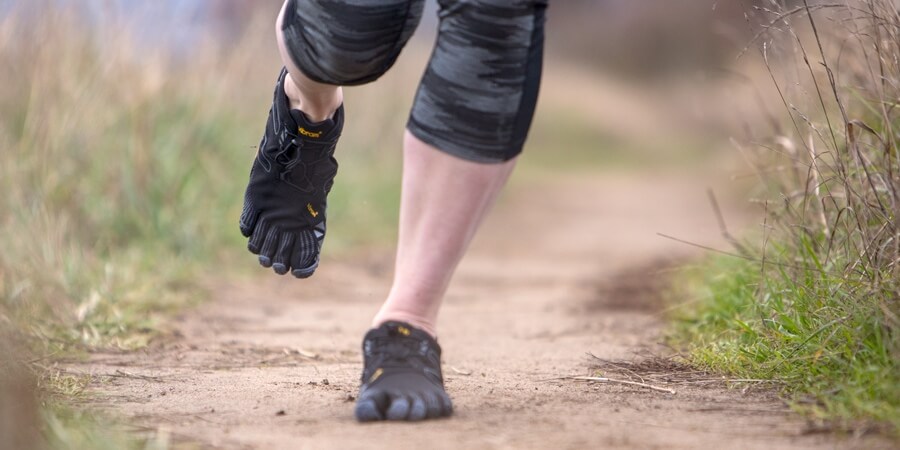
Even if you are not ditching your shoes, transitioning to a softer surface might help with sciatic nerve pain. Consider running on a track instead of the road. Or run on grass or a dirt train instead of a street.
Some runners find that wearing a shoe with a very little cushion or structure helps them with sciatica pain. Vibrams or Nike Free Running shoes are examples of shoes that are the closest thing to running barefoot without actually being barefoot.
Shortening your stride might also help you to run with sciatic pain. Why? Because a shorter stride keeps the sciatic nerve from fully extending.
If it hurts, stop. If it does not hurt to go slowly, just slow down. The most important thing when running through pain is to listen to your body and be smart.
Is It Ok To Exercise With Sciatica?
If running is not working for you, you can do many other forms of exercise while plagued with sciatica pain. Consider trying something else for a bit. Doctors advise that while you may be tempted to sit or lay around, moving is actually good for sciatic nerve pain.
If it hurts to be very active and engage in your normal activities, you can try walking or other low/no impact exercises.
What Exercise Is Best For Sciatica?
Yoga is a great exercise for someone struggling with sciatic pain. First, it is relaxing and helps you find a good mental space. Working and focusing on your breathing can be a very cathartic activity.
Pool time may be an excellent choice if you struggle with sciatic pain. Water walking or jogging is zero impact and involves relaxing water movement. If that does not cause pain, you may try some gentle swimming.
If swimming front crawl is uncomfortable, consider trying the breaststroke. If you are not a strong swimmer, you can still enjoy some forward motion using a kickboard.
While I would not recommend vigorous cycling or mountain biking, a gentle bike ride might be just the trick. Cycling can also be a relaxing activity, as well as a way to get some fresh air while you recover. If you are nervous about starting out, perhaps a stationary or recumbent bike would be best.
Gentle stretching is always a good idea when you are recovering from any injury. Increasing flexibility can be super helpful as you cover.
If the zero-impact exercises are working for you and you are anxious to work up a bit of a sweat, consider trying out an elliptical. Like running in motion, you may feel you are getting a bit of a workout in without hurting yourself.
Stretches for Sciatica
If you are trying to be proactive and working on getting rid of sciatic pain, there are some exercises you might wish to try.
Reclining Pigeon Pose:
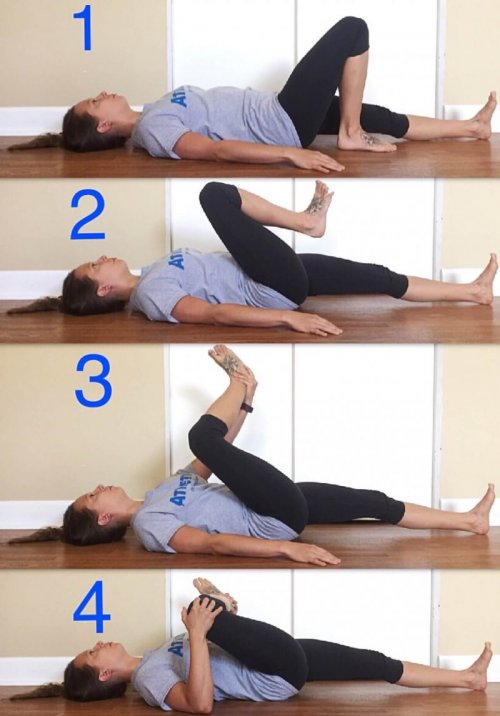
- Lie on your back
- Bring right leg to a right angle
- Lift left leg
- Place right ankle on top of left knee
- Hold
- Repeat on other side
Seated Pigeon Pose
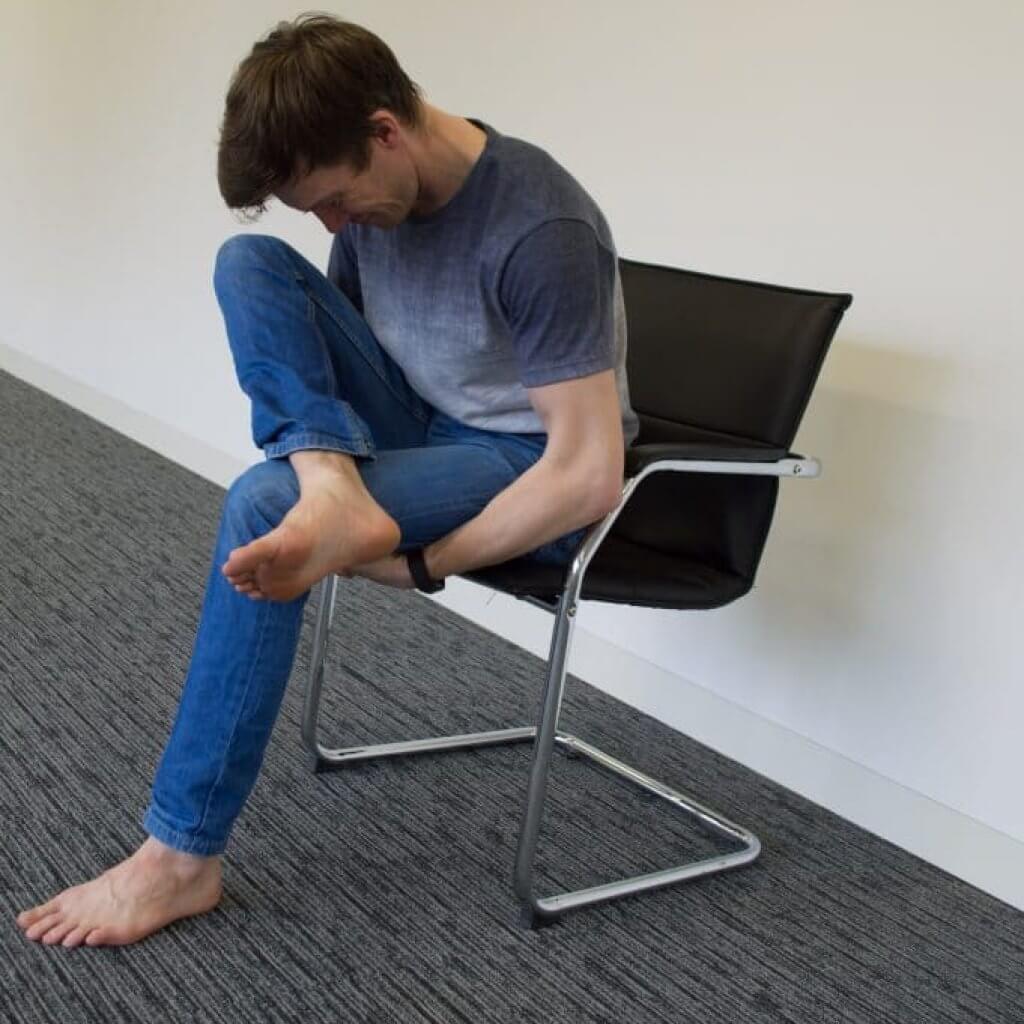
- Sit in chair
- Bring on knee up to chest
- Hug it into your body
- Focus on a good stretch without straining knee
Forward Pigeon Pose
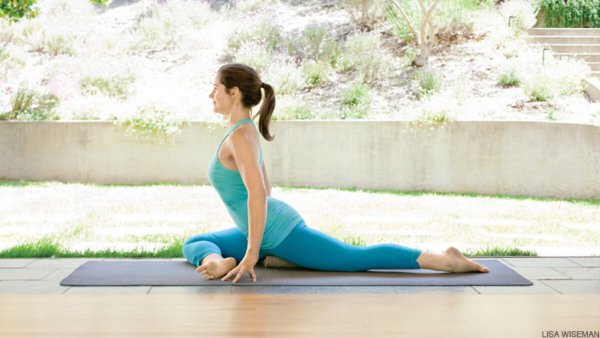
This is a bit more advanced of a pose. As illustrated, the leg is similar, but this stretch requires more flexibility and balance. Do not advance to this pose until you have mastered the other two.
Other Tricks?
Taking an anti-inflammatory, such as ibuprofen or naproxen, can help with discomfort that comes from sciatica pain. In some severe cases, a physician might suggest a higher dose of an over-the-counter medication or a prescription muscle reliever.
If the above suggestions fail to work, maybe try a professional massage. It is amazing the good that will do! When all else fails, contact your general practitioner. Some sessions with a physical therapist might net you the relief you are looking for.
Sources
- , 6 Stretches for Sciatica Pain Relief, Health Magazine
- , Running with Sciatica: 4 Things to Know share pin it Newsletters, Website
Latest Articles
 Is Running on a Treadmill Easier Than Running Outside?Runners have their own preferences, whether it is treadmill running, running outside on the road, or exploring trails. So...
Is Running on a Treadmill Easier Than Running Outside?Runners have their own preferences, whether it is treadmill running, running outside on the road, or exploring trails. So... Is It OK to Use Trail Running Shoes on the Road?While trail running shoes can be used on roads, especially in situations where a runner encounters mixed terrains or pref...
Is It OK to Use Trail Running Shoes on the Road?While trail running shoes can be used on roads, especially in situations where a runner encounters mixed terrains or pref... How to Fix Sore Quads After Running?Rest, ice, gentle stretching, and over-the-counter pain relievers can help soothe sore quads after running. Also, ensure ...
How to Fix Sore Quads After Running?Rest, ice, gentle stretching, and over-the-counter pain relievers can help soothe sore quads after running. Also, ensure ... 10 Fruits With The Most Electrolytes to Replace Sports DrinksThese fruits are high in electrolytes such as potassium, magnesium, and calcium, essential for hydration, muscle function...
10 Fruits With The Most Electrolytes to Replace Sports DrinksThese fruits are high in electrolytes such as potassium, magnesium, and calcium, essential for hydration, muscle function...

